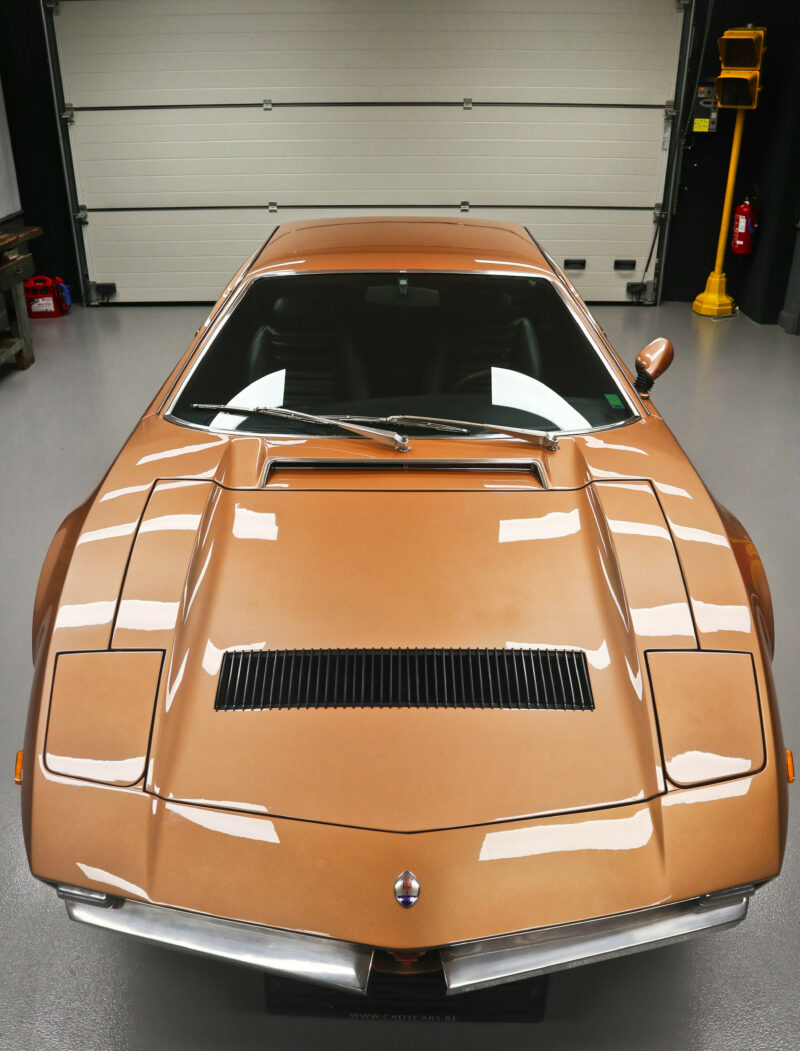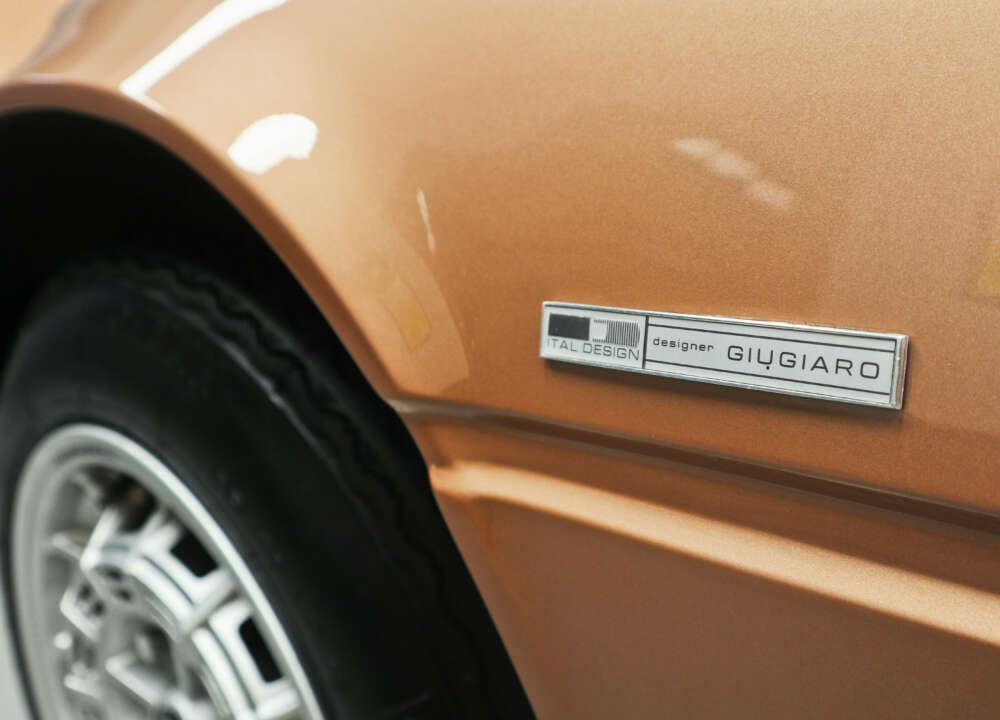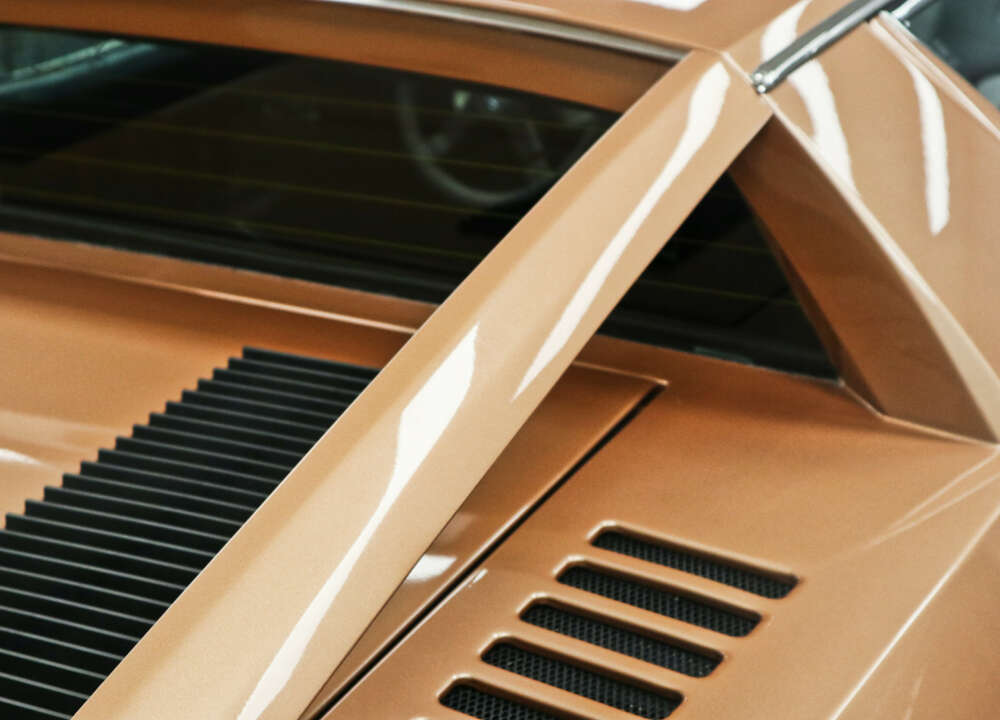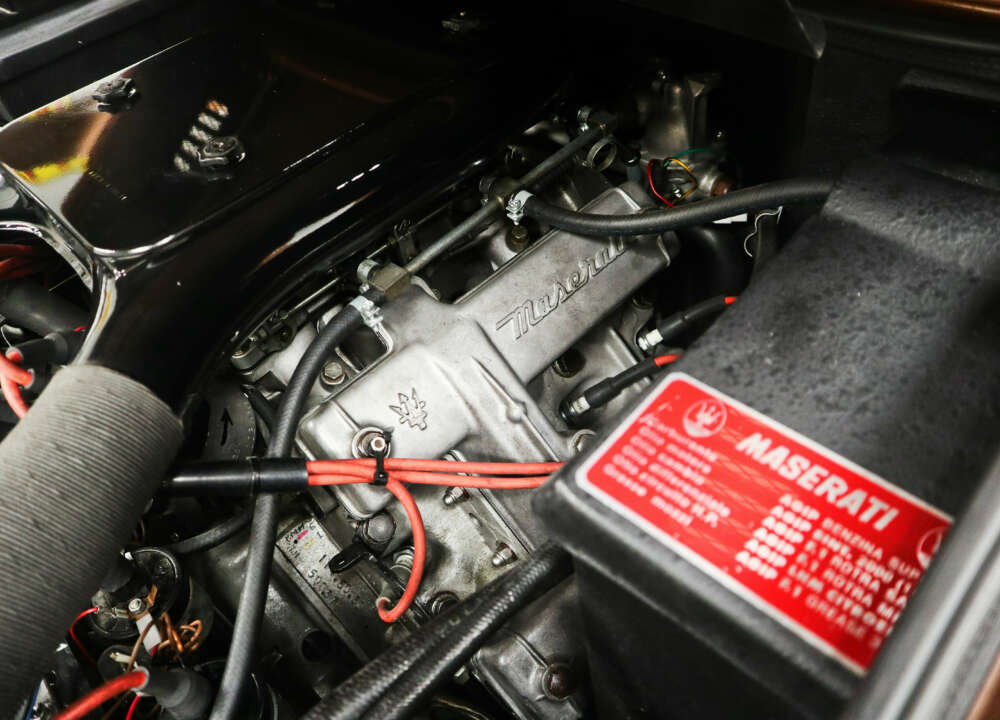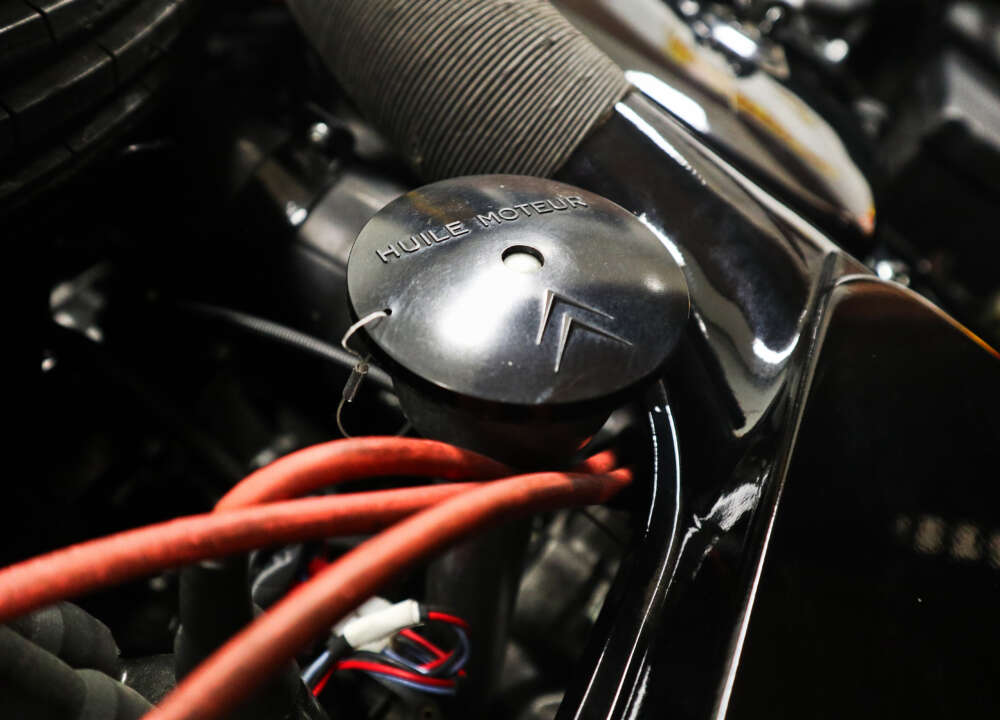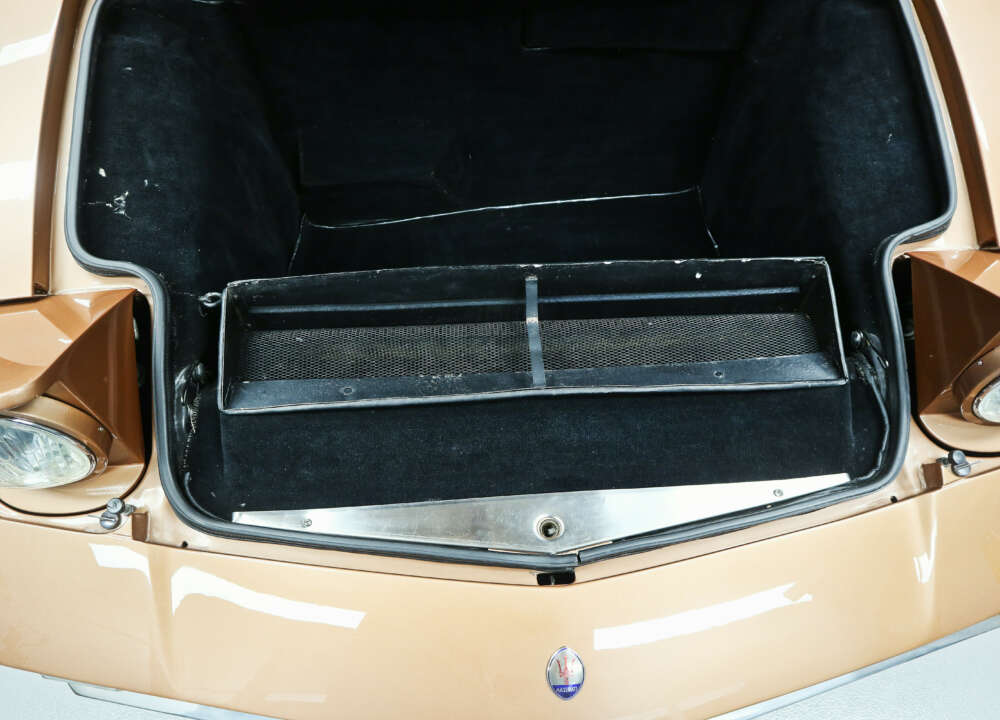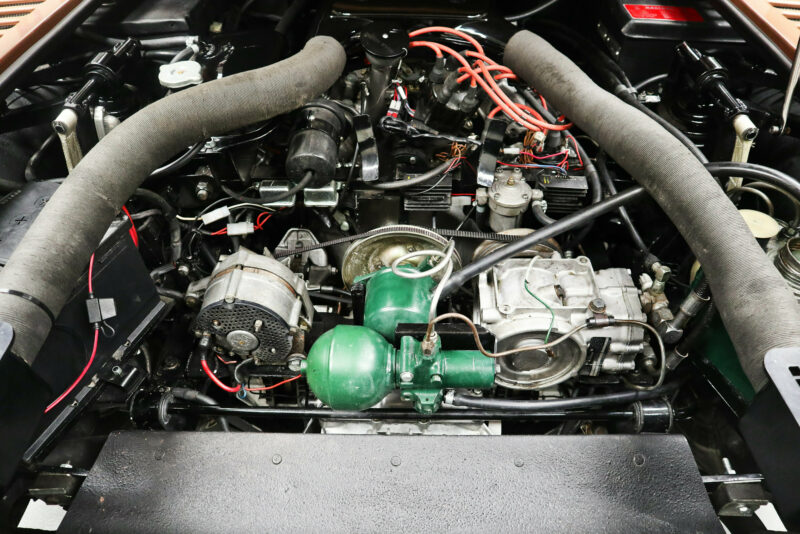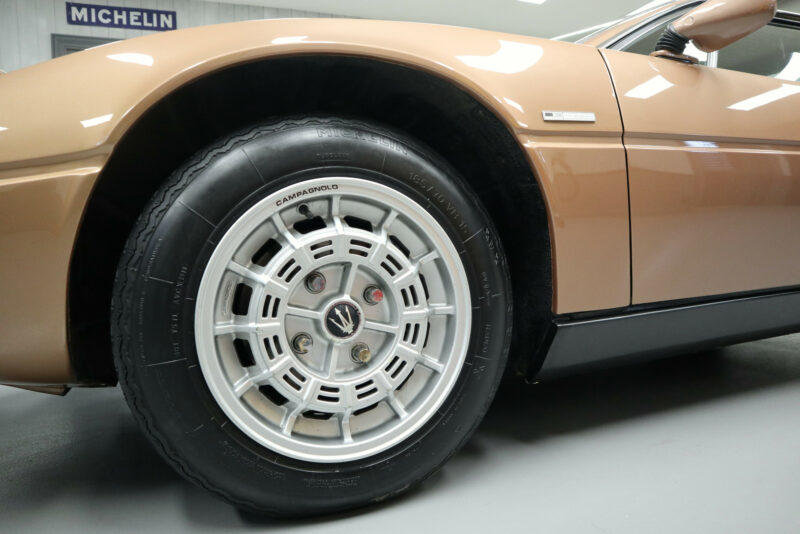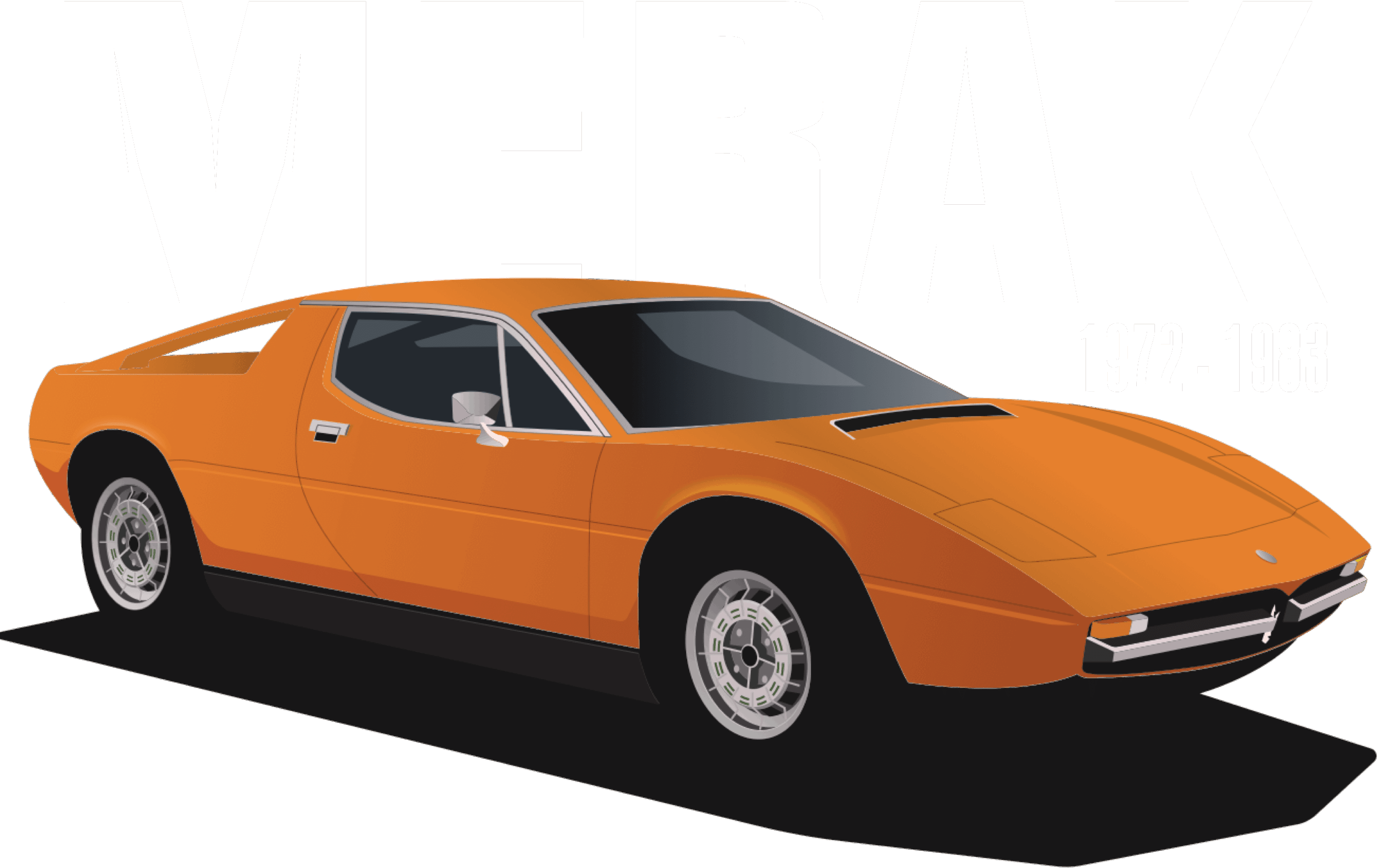
The Trident’s best handling GT stands apart from its siblings.
The Merak was a logical development for the factory. The brainchild of Guy Malleret, the company’s director during the Citroën years, he had been keen to develop something which would sell in significant numbers. The idea was to make clever use of what existed to create an affordable, innovative model in the new and fashionable rear mid-engined class.
The model’s name, chosen by Maserati’s commercial director Dominique Drieux, was not a name of a wind and is not to be confused with the Eponymous Indonesian city in Java. It receives its name after a star in the Ursa Major constellation.
Like Columbus’s egg combining the 3-litre version of the SM engine with the monocoque bodyshell of the Bora was a simple but brilliant idea, which constituted the foundation of the new entry-level model. Installing the engine longitudinally in the rear required some re-engineering of the driveline. The shorter length of the Merak block meant that the cabin could be transformed, enlarged, with two additional seats in the rear. However, this extra space is not for humans and is more like a soft luggage shelf.
The front of the car is based on the Bora and shows similarities. The Merak dispensed with the very costly and heavy rear glass engine cover and had the body sides at the rear integrated to the shell with a simple flat bonnet. A pair of arches, non-structural, covered the flat rear deck and allowed the rear to retain the smooth flowing lines of its genitor. The ‘arches’, also known as buttresses, were originally made from cast aluminium, then later in fibreglass. The suspension was by A-arms all round. The gearbox was that of the SM reconfigured in a transaxle with differential and a limited-slip differential. The front brake discs were vented while on the early cars the rear discs were inboard to reduce unsprung weight.
Inside the SM dashboard was adopted as it fit perfectly. Seats were either in leather or cloth, some with a plaid pattern.
Soon clients complained about having a Citroën dashboard. So the Merak dashboard, plain distinctive but straightforward, was created.

The US version was predictably afflicted with enormous bumpers. At first, chrome surfaced with overriders and later rubber-coated. On some cars, even with a sort of a lid over the exhaust pipe exit closing it off almost entirely! Always ready to torment European manufacturers, the US regulators also decided that they did not like the space saver doughnut tire. Hence, a full-size spare necessitated an unsightly bump in the bonnet since the spare was stored at the back of the engine bay. So now if you see a hunchback Merak you know why. Then, perhaps at last seized by guilt, said regulators later decided they accepted the doughnut tire, after all, cue no more bump.
Right-hand drive versions, built from September 1973 onwards, did not get the SM dashboard since the SM (except for a small handful of cars) was not made in right-hand drive. Therefore these Meraks were fitted with Bora dashboards.

The Merak SS was introduced in 1975 with bigger carburettors allowing 220hp. There was also a weight reduction of 50 kilos. The SS can be recognized by the grille between the headlights. Initial versions had the Merak dashboard. Later came the third dashboard and the most sought after one: the Bora dashboard which wraps around the driver.
Finally, a forgotten version: the Merak 80, this came out that year. Since de Tomaso had taken over, he ordered the installation of non-LHM brakes, by Bonaldi. All Merak 80 have the Bora dashboard and outboard rear discs.
Driving an SS allows you to feel the brisk and responsive engine: the Merak feels light and eager to go. Of course, if you drove a Bora just before you have to learn to keep atop the torque curve by changing gears more often to compensate for the lesser torque. It makes it a more involving driving experience, and you can feel there is less weight at the rear. It is nimble and handles very well. That and its advanced configuration and true beauty make it a compelling buy.

Specifications
There were many Merak versions. Seventy-three right-hand drive versions were made.
To complete the list, the Merak 2000 should be mentioned: this was for the Italian market only due to a significant tax break for cars under two litres (Ferrari and Lamborghini also made a 208GT4 and an Urraco P200). It can be identified by the same grille on the front as the SS, matte black bumpers and a black band alongside the body. Only 200 were made. They are not very powerful, more successful in front of a café than at the drag strip. Be careful some are for sale outside of Italy being passed off as 3-litres so know what you buy.
No Merak was ever raced in any significant events or professionally race-prepared. One was modified cosmetically by Saurer in Switzerland to ape the Thepenier Bora Group 4’s, beautifully done in aluminium. Still, disappointingly the engine was standard leaving it with a lot more bark than bite. It was oddly given a wooden steering wheel. A test mule Merak was fitted by the factory with a turbo. It was during the very early days in the R&D department’s experimenting with turbocharging, and it never ran properly. It can be seen in the Panini museum in Italy.
1820 cars built between 1972 - 1983.
Between 1972 – 1975 830 cars were built with 3.0 engine, between 1976 – 1982 787 cars were built with 3.0 SS engine, between 1980 – 1982 200 cars were built with 2.0 engine.
Engine
V6, rear-engine, light-alloy block
2965 cc, 1999 cc for Merak 2000
Power output: 170 hp for Merak 2000; 190 hp for Merak; 208 hp for Merak SS
Body
Two-door, 2+2 Coupé, monocoque
Designed by Italdesign
Performance
220 kph for Merak 2000; 240 kph for Merak; 250 kph for Merak SS
Competitors
Its rivals are the Ferrari 308GT4, the Lamborghini Urraco though the Porsche 911 must be mentioned. All of them were priced similarly when new. Seventies magazines were full of this hypothetical comparison with the German machine. The latter though appeals to a different public and timid who would never consider “those Eyetalian cars” whereas fans of Modenese cars, whichever of the three brands they may prefer, are usually unmoved by the pragmatic Stuttgart vehicle of which over one million have been made, all versions included.
The Urraco was very handsome, came in 2 litres, 2.5 litres P200 and P300 3 litre version. However, Lamborghini was not established enough as a company to venture beyond extreme supercars such as the Miura and Countach and give potential clients an economic model.
In reality, Urracos are very rare, quite fussy and finding a good one is a real challenge.
The real competitor is the Ferrari 308GT4, the First Maranello road car with a V8 and the only one designed by Bertone. It was not very handsome, stubby but handled very well, 2826 were made plus 840 208GT4’s for the home market.
Valuation
In terms of values, recent auction prices fluctuate significantly. Still, a standard car in good condition should be worth Euro 50.000 while some are sold in the low 40.000’s. Meanwhile, the SS vary from 60.000 to 80.000 for a really good car. At an auction in 2016, six Meraks were offered, all sold at an average price of 65.000 euros. In 2017-18 only two were offered, one SS sold for 67.000.
In comparison, 15 308GT4’s offered at auction in 2016-17 saw only seven sell at an average price of 59.000 Euros due to sellers not accepting the market’s readjustment. In 2017-18 5 were offered, and four sold at an average price of 55.000. So unlike the Ghibli when compared to the Ferrari Daytona, the Merak’s value is established at the same level or above its competitors.
A word of caution: some Meraks are very severely affected by rust, particularly at the rear to the point where their integrity is threatened, and the suspension might collapse. Meticulous and thorough inspections are therefore necessary. Finding a good one is worth the effort.
We are aware that the valuation of this car is very subjective and depends on many criteria. That is why auctions are used as a barometer to sense where the market is moving. However, premium restored or preserved classic Maseratis change ownership through private sales (and seldom in an auction). As a result, rarely do we discover the price for an off-market transaction.
Persuasion
The Merak will appeal to someone who enjoys its beautiful lines, agile handling and the driving pleasure it generates. It is not really for the performance-oriented who would be better off with a Bora. For concours enthusiasts, it is very well suited due to its sophisticated concept and lines, clearly far more attractive than the 308GT4. A later SS or Merak 80 with the Bora dash would be the ultimate buy. But an early Merak, with a typically early seventies livery such as orange or Rame Metallizzato, has a distinctive charm. This perky, cute little macchina did a lot for the Trident in its day in rejuvenating the brand image.
Initial texts by Marc Sonnery.
Registry
The Merak Registry is publicly available https://www.merak-registry.com. You can have information added or updated via the registry keeper Julian Quincey who lives in Australia. He is also reachable on Facebook.

